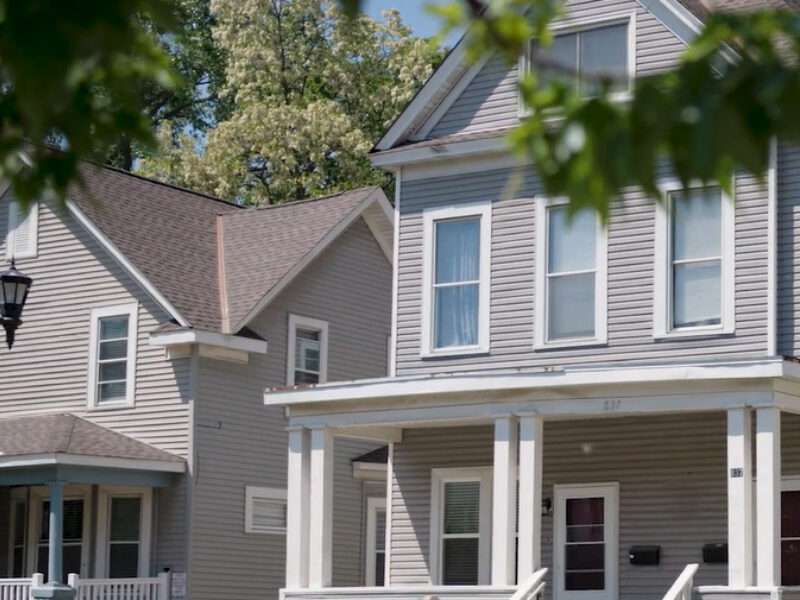The third volume of the East Metro Pulse collects responses from more than 3,100 residents on the health and vitality of Dakota, Ramsey and Washington counties.
The Saint Paul & Minnesota Foundation has released the third volume of its East Metro Pulse, a tool the Foundation uses to assess the experiences, opinions and needs of East Metro residents in areas such as community connectedness, economic opportunity, education, health, housing and transportation.
The findings of this third edition of the survey, commissioned by the Foundation and conducted by Wilder Research in the summer of 2021, are now available.
Survey results are available in an interactive format that allow you to view, filter and download results sorted by age, education level, language, race and ethnicity, gender, household income and housing status and as a comprehensive data book compiling all responses.
You can also view five special topic reports highlighting results in the following areas:
- COVID-19
- Employment
- Education
- Fair Treatment
- Critical Issues
“The data compiled via the East Metro Pulse shed light on the issues, concerns, needs, strengths and lived experiences of East Metro residents while also highlighting how connected to and engaged with their communities these residents feel,” said Nadege Souvenir, the Foundation’s chief operating officer.
“We use these results in our own work and make them widely available because we believe they provide insightful information for use by other funders, nonprofits, government agencies, service providers and community groups.”
“The latest East Metro Pulse is rich with data that is revealing about how East Metro residents are feeling about their lives and their neighborhoods, the good and the not so good.”
Nadege Souvenir

Nicole MartinRogers, research scientist at Wilder Research and lead researcher on the survey, said Wilder Research’s partnership for the East Metro Pulse reflects its focus on using data to improve the welfare of people in the greater Saint Paul metropolitan area and beyond.
“To inform our efforts to create positive change, we must first listen and engage respectfully, honoring the diverse perspectives and cultures found in the East Metro, which is what we do through the East Metro Pulse,” said MartinRogers.
Measuring the Pandemic’s Impact
The most recent East Metro Pulse asked residents about the effects of the COVID-19 pandemic on their lives. For the East Metro area overall, 38 percent of residents said their lives changed in a somewhat or significantly negative way, 35 percent said their lives stayed about the same and 27 percent said their lives changed in a somewhat or significantly positive way.
However, negative effects were more profoundly felt by renters as compared to homeowners (51 percent vs. 34 percent). In addition, negative effects were more acutely experienced in households with incomes of less than $40,000 annually.
When asked to identify the main negative impact of COVID-19 on their lives, East Metro Pulse respondents overwhelmingly singled out “connections to others in the community”. The loss of connection to others in the community was experienced most strongly by the youngest and oldest survey respondents (66 percent among those 18 to 34 and 68 percent among those 65 or older).
Less Enthusiasm for the East Metro as a Place to Live
In the most recent East Metro Pulse, a lower percentage of residents rated the quality of life in their communities as “excellent” compared with the 2018 survey.
Similarly, lower percentages rated their communities as “excellent” places to live and to raise children compared with the 2018 survey. This was true for the East Metro area overall and for all the subregions comprising it (Dakota County, Ramsey County, Washington County, the City of Saint Paul and Suburban Ramsey County).
The region’s rating for community connectedness also eroded some from 2018 levels. Compared with the 2018 East Metro Pulse, a lower percentage of residents in the region overall and in all of the subregions said they thought of the East Metro as “a place where you belong or just a place to live,” perhaps reflecting in part the pandemic’s isolating effects.
“The latest East Metro Pulse is rich with data that is revealing about how East Metro residents are feeling about their lives and their neighborhoods, the good and the not so good,” said Souvenir. “The survey’s findings offer powerful reminders that we cannot be complacent about the work we still need to do collectively and collaboratively to help our communities thrive.”









